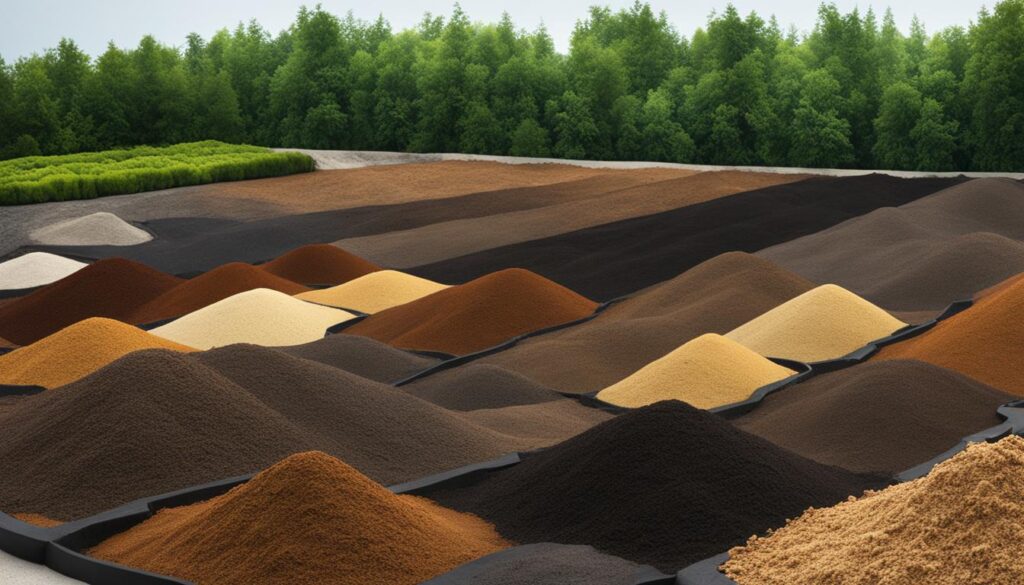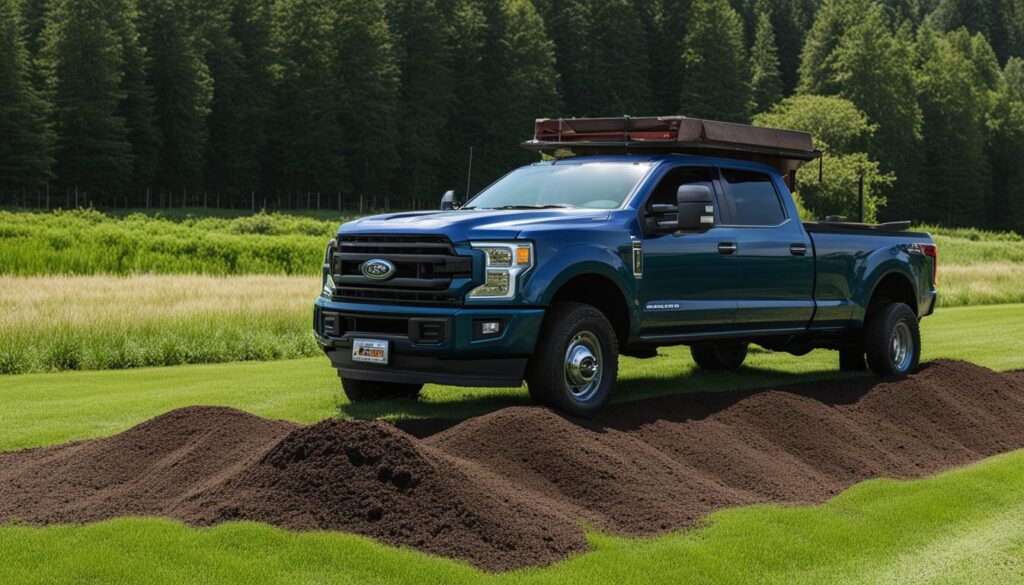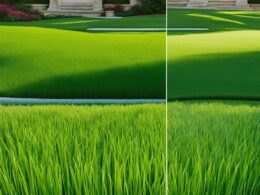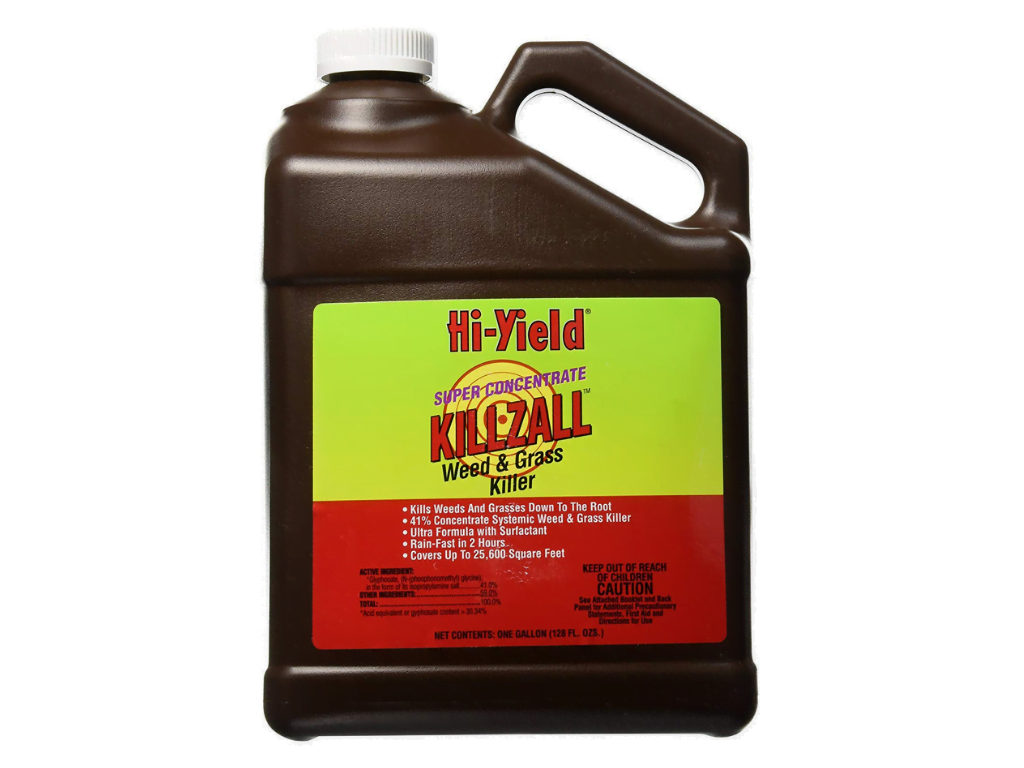Are you looking for affordable top soil for your gardening or landscaping project? Look no further! In this article, we will discuss the price per yard for top soil and how you can get high-quality dirt at an affordable cost.
When it comes to purchasing top soil, the cost can vary depending on various factors. The national average price for top soil is around $600, with most homeowners spending between $250 and $1,000.
You can buy top soil by the yard or by the bag, with prices ranging from $10 to $50 per cubic yard or $2 to $5 per bag. If you have a large project, bulk purchases may be available at discounted rates, making it even more affordable.
Top soil is the uppermost layer of soil, filled with nutrients that are beneficial for your plants. It is perfect for gardening and landscaping purposes, whether you want to improve soil quality or create new garden beds from scratch.
By choosing top soil that is both affordable and of high quality, you can ensure the success of your gardening and landscaping endeavors. Let’s explore the average costs, types of top soil, and other factors that can affect the price in the following sections.
Average Costs
When it comes to topsoil projects, the average cost ranges from $250 to $1,000, with the national average being $600 for standard-size garden beds, including delivery. Several factors influence the cost of topsoil, such as the size of your garden beds, the type of topsoil chosen, the amount you need, and the distance the delivery company has to travel.
For larger projects that require organic topsoil at a depth of 4 inches, the cost can reach upwards of $2,000, as this accounts for materials, labor, and delivery. On the other hand, if you only need a small amount of topsoil for potted plants or small garden flower beds, you can find bags available at local home improvement stores for as low as $2 to $5 each.
Keep in mind that DIY projects, where you spread the topsoil yourself, will generally have lower costs overall. You only need to invest in tools and materials for a small area, making it a more budget-friendly option.
Calculating the costs of your topsoil project is essential to ensure you stay within your budget. Consider the size of your project, the type of topsoil needed, and whether you will be hiring professionals for delivery or spreading services. By estimating the average costs, you can plan accordingly and make informed decisions for your gardening and landscaping needs.
Types of Topsoil and Costs
When it comes to topsoil, there are various types available, each with its own unique characteristics and costs. Whether you’re working on a gardening or landscaping project, understanding the different options can help you make an informed decision. Here are some of the common types of topsoil and their associated costs:
- Unscreened topsoil: This is the least expensive type of topsoil, ranging from $10 to $25 per cubic yard. It is not filtered to remove rocks and debris but can still be suitable for certain applications.
- Screened topsoil: Screened topsoil undergoes a filtering process to remove rocks and debris, resulting in a higher-quality product. It typically costs between $20 and $40 per cubic yard.
- Organic planting mixes: These mixes combine topsoil with organic matter, creating a nutrient-rich blend for optimal plant growth. Prices for organic planting mixes range from $15 to $50 per cubic yard.
- Landscape mixes with sand: These blends contain sand, which helps improve drainage and aeration in the soil. Landscape mixes are priced between $15 and $50 per cubic yard.
- Screened loam: This type of topsoil consists of a mixture of sand, silt, and clay. It is a versatile option and is commonly used for lawns and gardens. Screened loam costs between $15 and $50 per cubic yard.
- Super loam: Super loam is similar to screened loam but may have additional amendments or nutrients added to enhance its quality. It falls within the price range of $15 to $50 per cubic yard.
- Black dirt: Black dirt, also known as dark-colored topsoil, is highly fertile and suitable for a variety of gardening and landscaping projects. Its cost ranges from $15 to $50 per cubic yard.
- Organic compost: Organic compost is made from decomposed organic materials, such as leaves and plant debris. It enriches the soil and promotes healthy plant growth. Organic compost is priced between $15 and $50 per cubic yard.
- Mushroom compost: Mushroom compost is a specific type of organic compost that is ideal for growing mushrooms. It is rich in nutrients and costs between $15 and $50 per cubic yard.
- Leaf compost: Leaf compost is created by decomposing fallen leaves, creating a nutrient-rich soil amendment. It can be used for various gardening applications and typically costs between $15 and $50 per cubic yard.
It’s important to note that the cost of topsoil can vary depending on factors such as location, supplier, and quantity needed. Higher-quality topsoil may come with a higher price tag, but it can significantly improve your gardening and landscaping results. Consider your specific project requirements and budget when choosing the type of topsoil that best suits your needs.
Factors Affecting Cost
When it comes to the cost of topsoil, several factors come into play. Understanding these factors will help you better determine the overall expense of your topsoil project.
The size of your garden beds is one significant factor that affects the cost. Larger garden beds will naturally require more topsoil, leading to a higher overall expense. So, consider the dimensions of your project before making any purchases.
The type of topsoil you choose also influences the cost. Different types of topsoil have varying compositions and qualities, impacting their price. It’s important to assess your specific needs and budget to select an appropriate type of topsoil.
The amount of topsoil needed is another critical factor. The more topsoil you require, the higher the cost will be. Calculating the exact amount you need based on the size of your project is essential to avoid overbuying and overspending on topsoil.
Additionally, the distance the delivery company has to travel can impact the cost. Longer distances typically result in higher delivery fees. So, if you are located far from the supplier, keep in mind that it may affect the final price of the topsoil.
The quality of the topsoil also plays a role in pricing. Topsoil with a higher organic matter content and fewer weed seeds is generally more expensive. However, investing in higher-quality topsoil can have long-term benefits for the health and growth of your plants and landscaping projects.
If you choose to hire professionals for spreading and grading services, this will add to the overall cost of your topsoil project. While it may require an additional investment, hiring experts can save you time and effort, ensuring that your topsoil is properly distributed and leveled for optimal results.
Considering these factors will help you budget and make informed decisions when it comes to the cost of topsoil for your gardening and landscaping projects.
Topsoil Delivery and Related Services
When undertaking a topsoil project, you’ll need to consider the logistics of topsoil delivery. Many landscaping companies offer topsoil delivery services, making it convenient for you to get the necessary materials right to your doorstep. These delivery services typically come with a price tag, ranging from $50 to $150 per trip. The cost may vary based on factors such as the volume of topsoil required, the distance of delivery, and the difficulty of access to your property.
Some companies may even offer free delivery for orders that meet a certain minimum amount. To take advantage of this cost-saving opportunity, make sure to inquire about any delivery promotions or discounts available when placing your order.
Aside from topsoil delivery, there are other related services that you may require for your topsoil project. These services can assist you in achieving the best results for your landscaping needs. Grading services, for example, help ensure that your topsoil is spread evenly and levelled correctly. Land clearing services can help prepare your project area by removing any unwanted vegetation or debris. Additionally, soil testing services can be beneficial to assess the nutrient levels and pH balance of your existing soil, allowing you to make informed decisions about any necessary amendments.
Keep in mind that the cost of these related services can vary depending on the size of your project and the specific requirements. It is recommended to consult with landscaping professionals to determine the extent of assistance you may need to achieve your desired landscaping goals.
How to Measure and Calculate Topsoil
To ensure you have the right amount of topsoil for your project, it’s important to accurately measure and calculate the quantity needed. Follow these steps to determine the correct amount:
Step 1: Measure the Length and Width of Your Garden Beds
Using a tape measure, determine the length and width of your garden beds in feet. Take measurements from edge to edge, ensuring you account for any irregular shapes or corners.
Step 2: Measure the Depth of Topsoil Needed
Decide on the desired depth of topsoil for your project. Typically, a depth of 4 inches is recommended for gardening and landscaping purposes.
Step 3: Calculate the Cubic Yards of Topsoil Needed
Using the measurements from steps 1 and 2, you can now calculate the cubic yards of topsoil required. Apply the following formula:
Cubic Yards = Length (feet) x Width (feet) x Depth (feet) / 27
For example, if your garden bed measures 10 feet by 6 feet and you require a depth of 4 inches, the calculation would be:
Cubic Yards = 10 x 6 x 0.33 / 27 = 0.73 cubic yards
Step 4: One Cubic Yard Coverage
It’s important to know how much area one cubic yard of topsoil can cover. At a depth of 4 inches, one cubic yard can cover approximately 80 square feet.
Step 5: Online Topsoil Calculators
If you prefer an automated calculation, various online topsoil calculators are available. These tools allow you to input your measurements and provide an instant estimate of the topsoil quantity required for your project.
By accurately measuring and calculating the amount of topsoil needed, you can ensure you have the right quantity for your gardening or landscaping project. This will help you avoid unnecessary expenses and save both time and effort.
Is Black Mulch a Cost-Effective Alternative to Top Soil for Yard Projects?
When considering yard projects, the cost of black mulch can be a cost-effective alternative to topsoil. Black mulch provides effective weed control, moisture retention, and soil insulation, all while enhancing the visual appeal of the yard. With proper maintenance, a yard of black mulch can provide long-term benefits at an affordable cost.
Conclusion
Topsoil is an essential component for any gardening or landscaping project. Understanding the factors that affect topsoil cost, such as type, quality, amount, and delivery distance, is crucial in obtaining affordable, quality dirt for your needs. With an average price range of $250 to $1,000 and a national average of $600 for standard-size garden beds, it’s important to calculate the amount of topsoil required and consider the potential expenses.
By measuring the length, width, and depth of your garden beds, you can easily determine the cubic yards of topsoil needed. Online topsoil calculators can assist you in this process. Additionally, certain types of topsoil, such as unscreened, screened, organic mixes, and compost, come at different prices. Balancing your budget and specific project requirements will ensure you choose the right type and quality of topsoil.
When purchasing topsoil, it’s advisable to research and compare prices from different suppliers. Look out for discounts on bulk purchases and consider additional services like grading and soil testing, which may be necessary for your project. By conducting thorough research and planning, you can find affordable topsoil while maintaining the quality necessary to enhance your gardening or landscaping endeavors.











